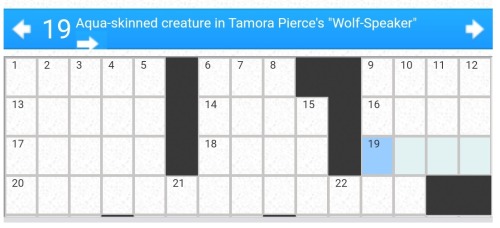#the immortals
Since this blog is going to be focused on posting articles about my worldbuilding efforts for the “Enemies of Creed” series, I figure it will be worthwhile for me to start off by providing some names and terminology with specific meaning to that world. I will likely refer to these terms fairly regularly, so it will be helpful for me to link to this post, rather than have to provide definitions every time.
It’s very likely that I will come back and update this post from time to time as I decide to add more names and terms that I find useful to reference. To avoid a common scenario where the version that people see is an outdated reblog, I’ll be putting all the actual content below a Keep Reading link. (Plus that way, I can make this as long as I want without annoying anybody.)
So, with that introduction out of the way, let’s get started with some grand, mythic-level terms and names (it’s worth noting that while these terms and names will likely be referenced a lot in articles on this blog, they actually appear very little or not at all in the books.)
- Reulla - The name of the world in which the series takes place.
- Domas - Referred to only in the books as “The Ancient One.” Domas is a being possessing essentially godlike levels of magical power and knowledge. Originally a mortal who lived on a world very similar to Earth, populated by a species that is practically identical to humans, Domas learned to harness life magic that allowed him to become immortal and leave his world to explore the cosmos. After spending countless centuries traveling among other worlds, Domas found a planet with no life or magic of its own, but otherwise so similar to his home world that he decided to make it his home, naming it, populating it with life, and cultivating magic. After struggling for centuries with his contentious mortal “children,” Domas eventually left Reulla to travel the cosmos again, entrusting the world to the stewardship of the Immortals.
- The Immortals - The closest thing that the world of Reulla has to gods and goddesses. The Immortals do not age, and they are much more powerful and difficult to kill than mortals, but they are not technically invincible. Individuals among The Immortals can be challenged, overthrown, and replaced by mortals capable of defeating them, but this happens so infrequently that most of the mortal population believes that the pantheon of Immortals is unchanging and constant. By the time the events in the “Enemies of Creed” series take place, The Immortals have all but completely removed themselves from the workings and affairs of mortal beings and civilization. This is due to the observation that any time they do get involved in conflicts between mortals, even with good intentions, their involvement invariably escalates the conflict.
- Nishpari - The first “mortal” race of beings that Domas created in his image. The Nishpari did not age, and they had great physical attributes and intelligence, but they had no dealings with magic, nor could they use magic. They were also aggressive and competitive in everything they did, each one of them refusing to settle for second best. Because of this, their civilization tore itself apart while trying to secure their dominion over Reulla. By the time Domas decided to try again and create the Five Mortal Races, the Nishpari had faded into the realm of legend.
- The Five Mortal Races - Orcs, Goblins, Dwarves, Elves, and Humans. Domas created these five races modeled in his image, but also influenced by many of the great people and civilizations that he encountered and admired during his years traveling the cosmos. While humans were created to be most similar to the people on his own homeworld, Domas created all five with attributes that he valued, and created them with the ability to interbreed, in the hopes that by doing so their future generations would become united as one, and achieve gradually all the gifts he had given the Nishpari, without the arrogance and strife. (Spoiler: It hasn’t worked out that way so far.)
- The Great Diminishing - One of the constant attributes of magic on Reulla is that magic abhors being tamed. It’s magic after all, not science. It thrives on what is novel, original, and intense. So while magic is not inherently violent or malicious, it does not tend to thrive in periods of uninterrupted consistency and peace either. It tends to increase and grow most during times of conflict and excitement and upheaval. The beginning of the events in the “Enemies of Creed” series take place during the longest period of peace that Reulla has ever experienced, and that has caused a great diminishing of magic that the majority of Reullans either don’t understand or don’t notice at all. The “Enemies of Creed” series focuses on the gathering conflict that is destined to usher in a new era of magical growth and innovation, and the two branching destinies that foretell who will have the upper hand in that conflict for generations to come.
Alright, I think that’s enough to get us started for now. I will likely come back and add more in an update later. For now though, I think this will suffice.
So the other day my dad was playing USA Today’s Daily Crossword and found this…
Are we going mainstream now?
(Image ID: screenshot of part of a crossword. 19-across is 4 letters, prompt is “Aqua-skinned creature in Tamora Pierce’s “Wolf-Speaker.” End ID)
Bonus:
When he read the prompt to me I wasn’t looking at how many letters it was so I said “Iakoju!”
Post link

